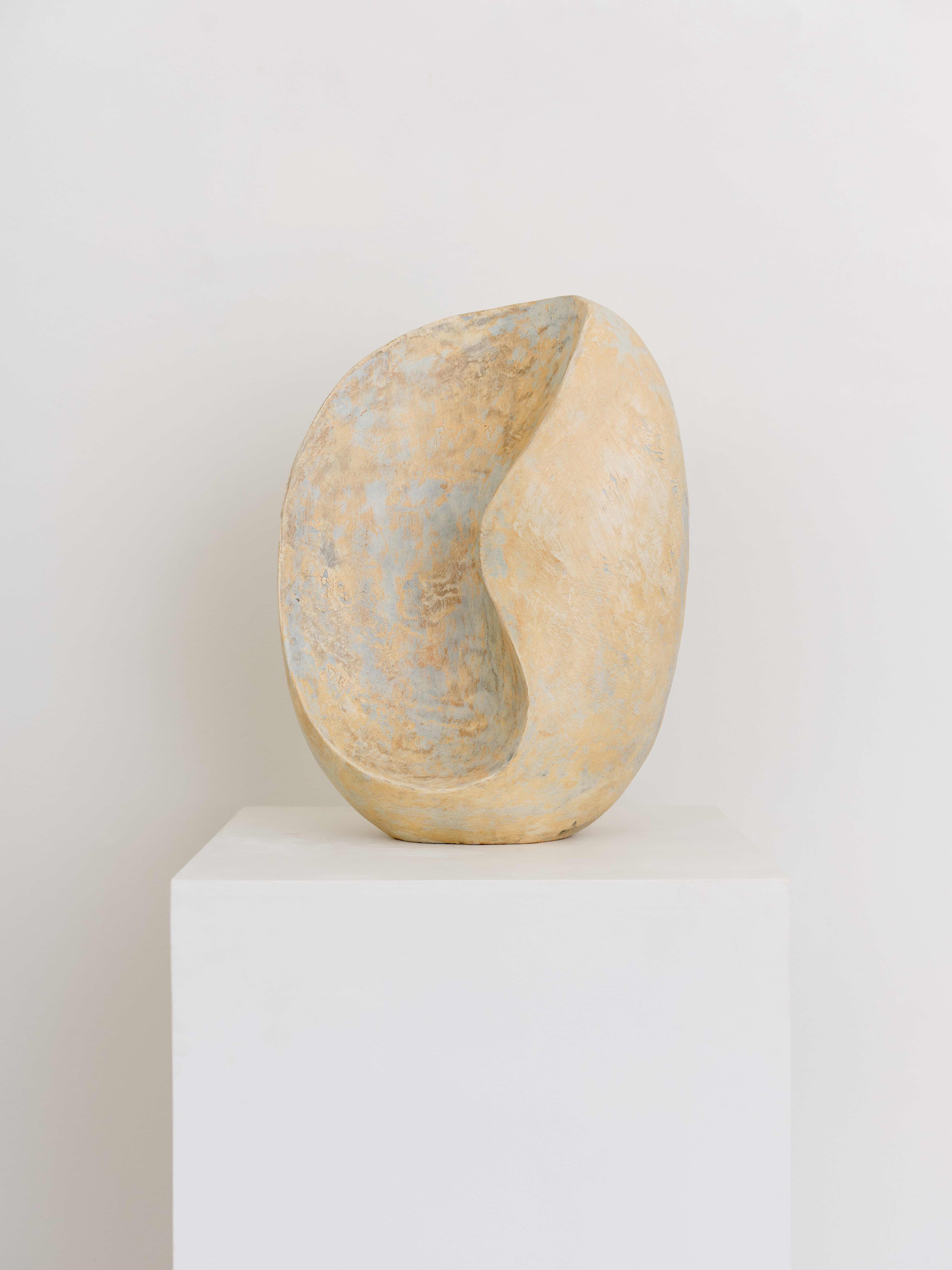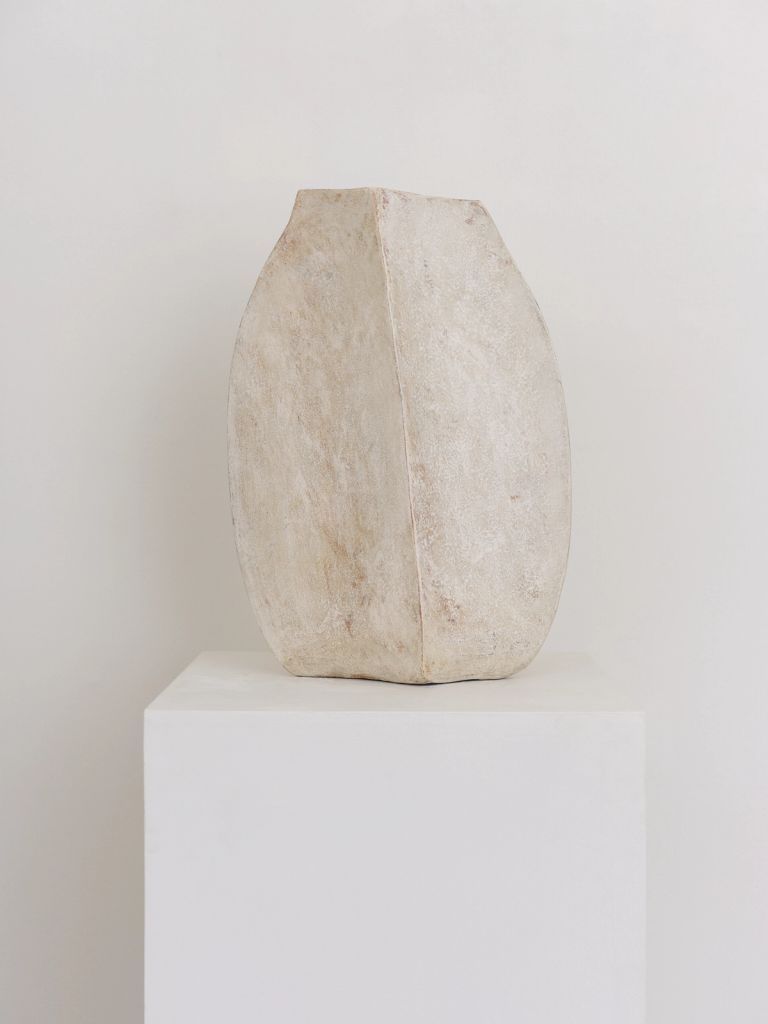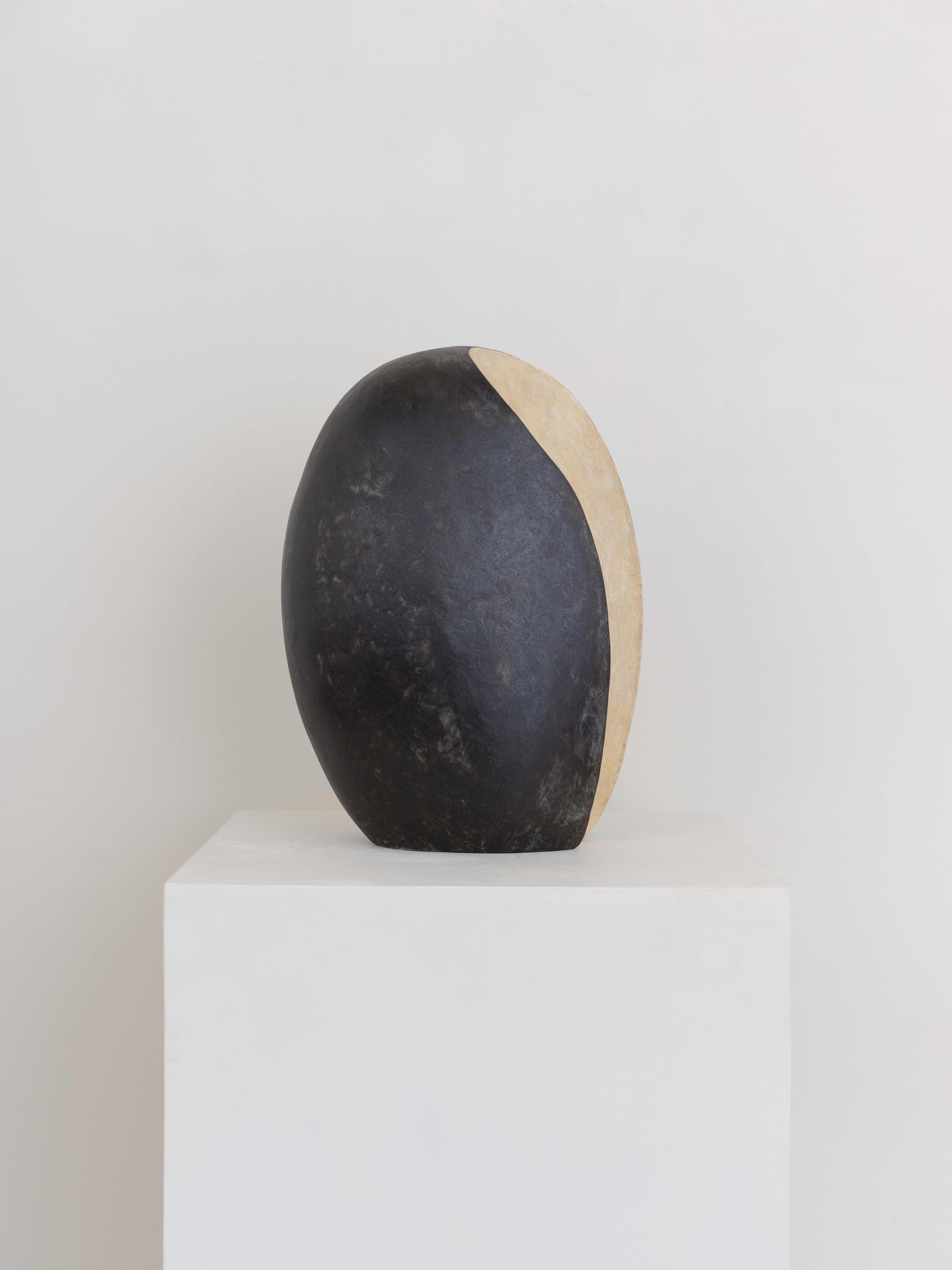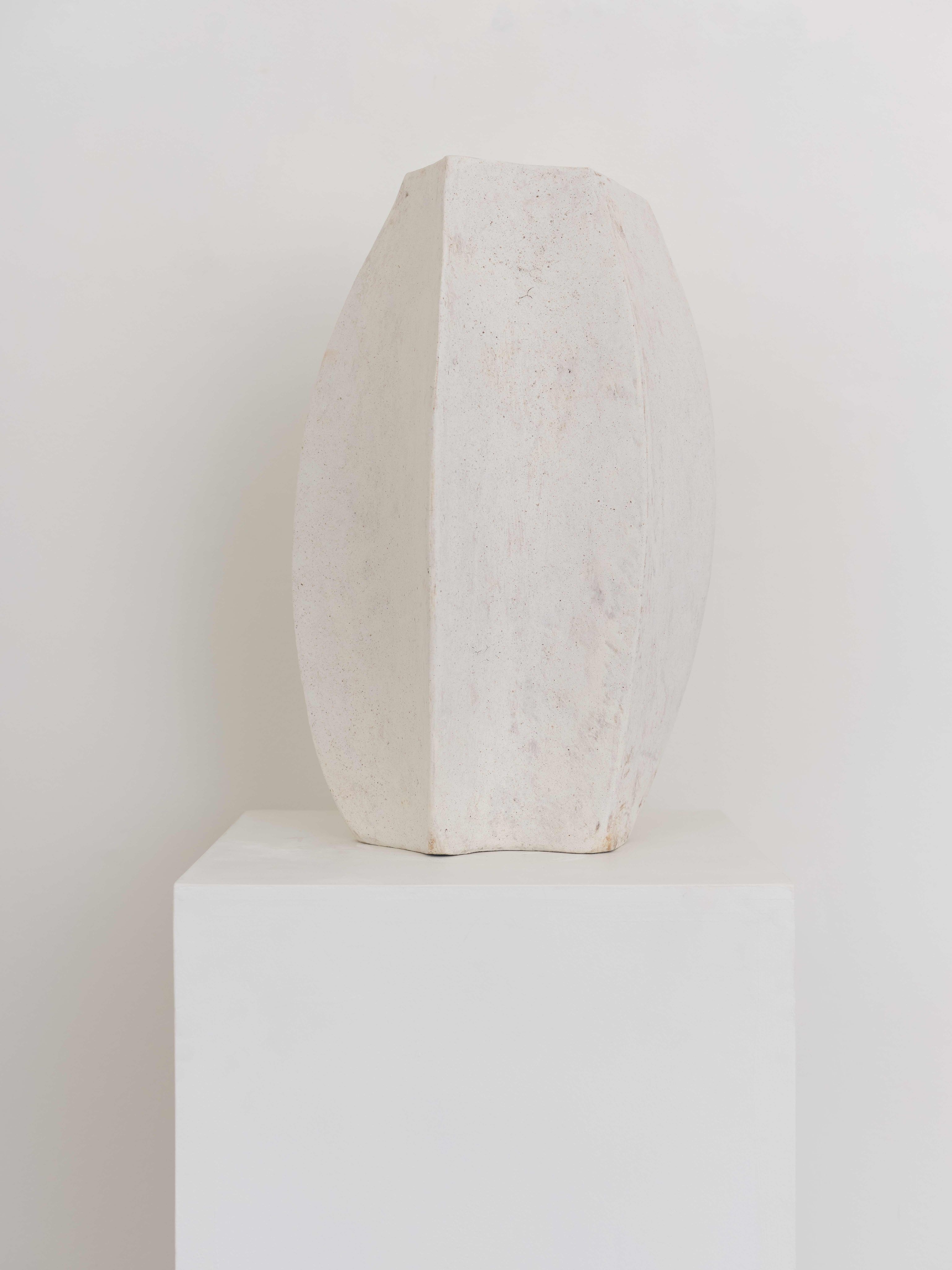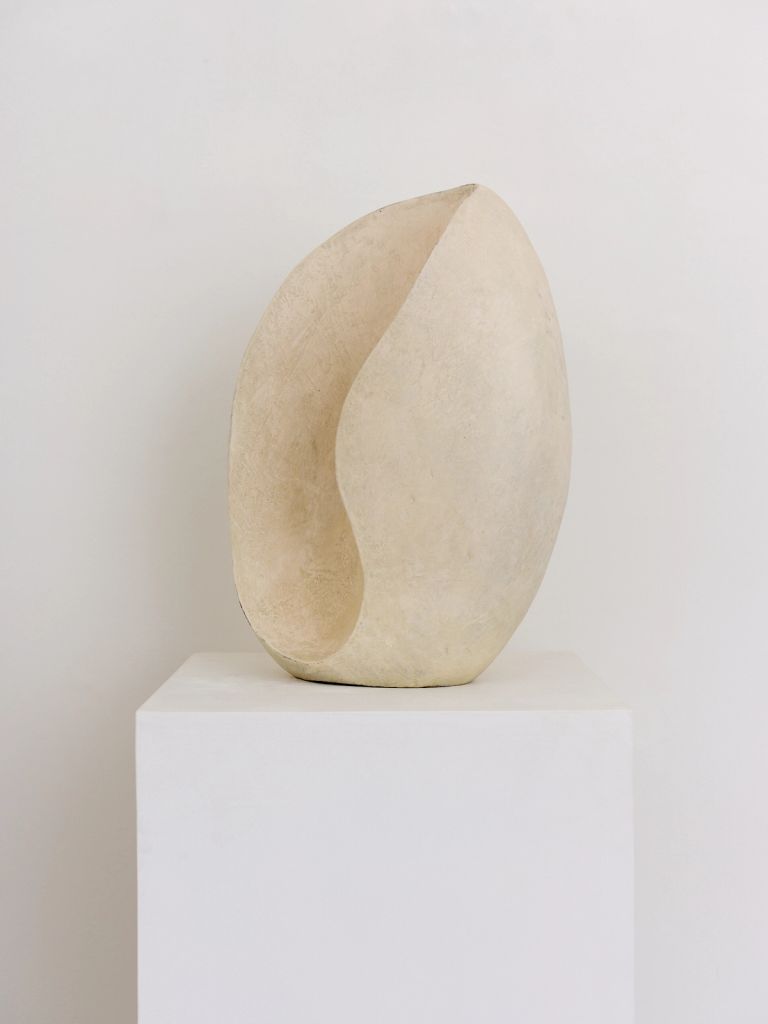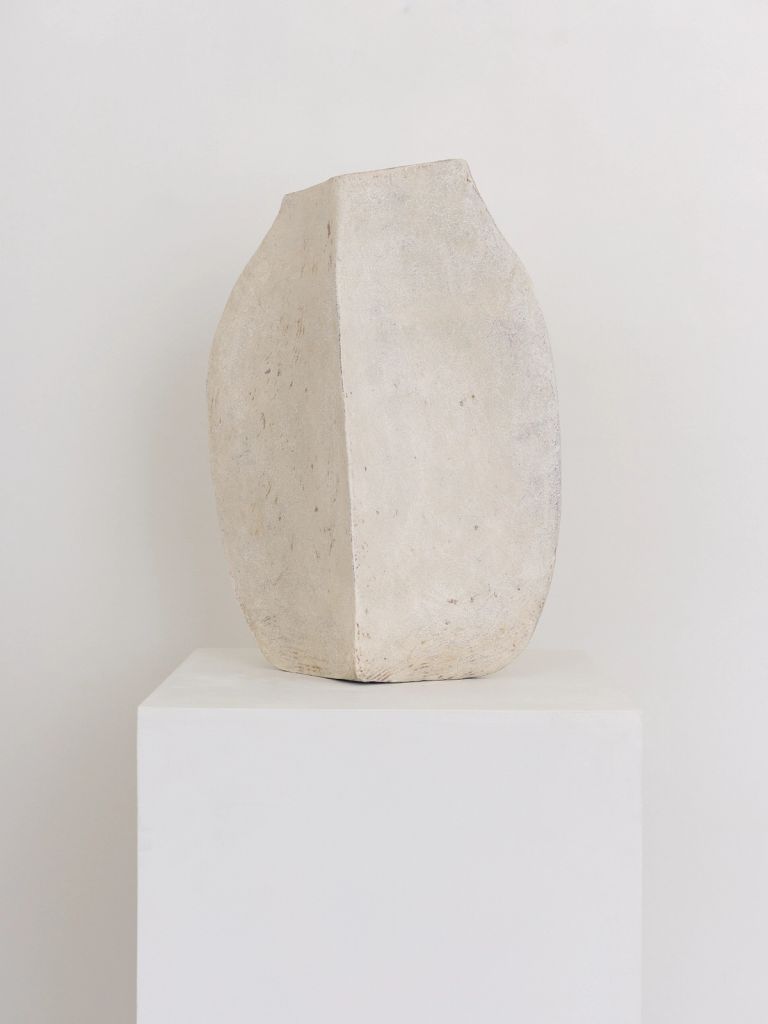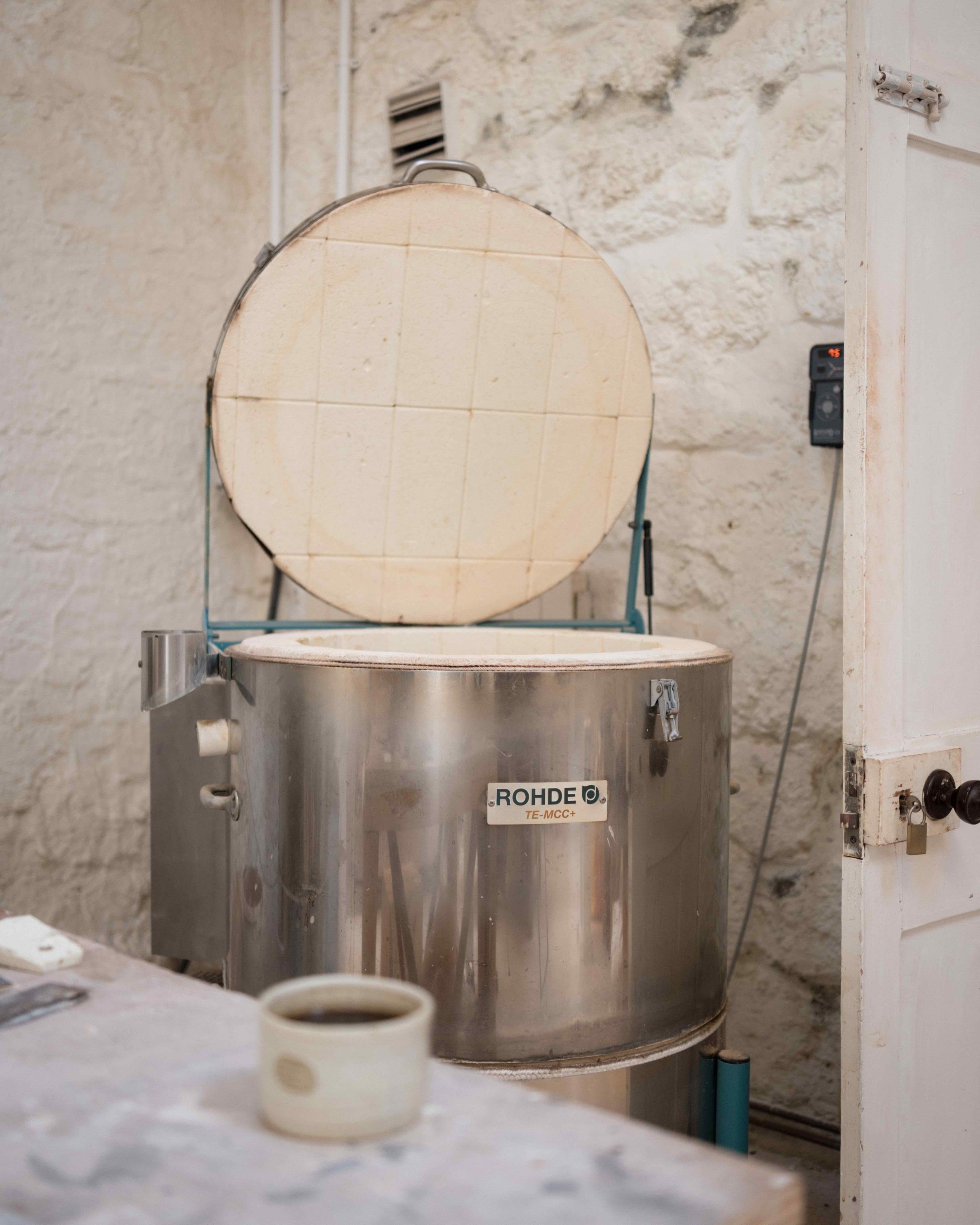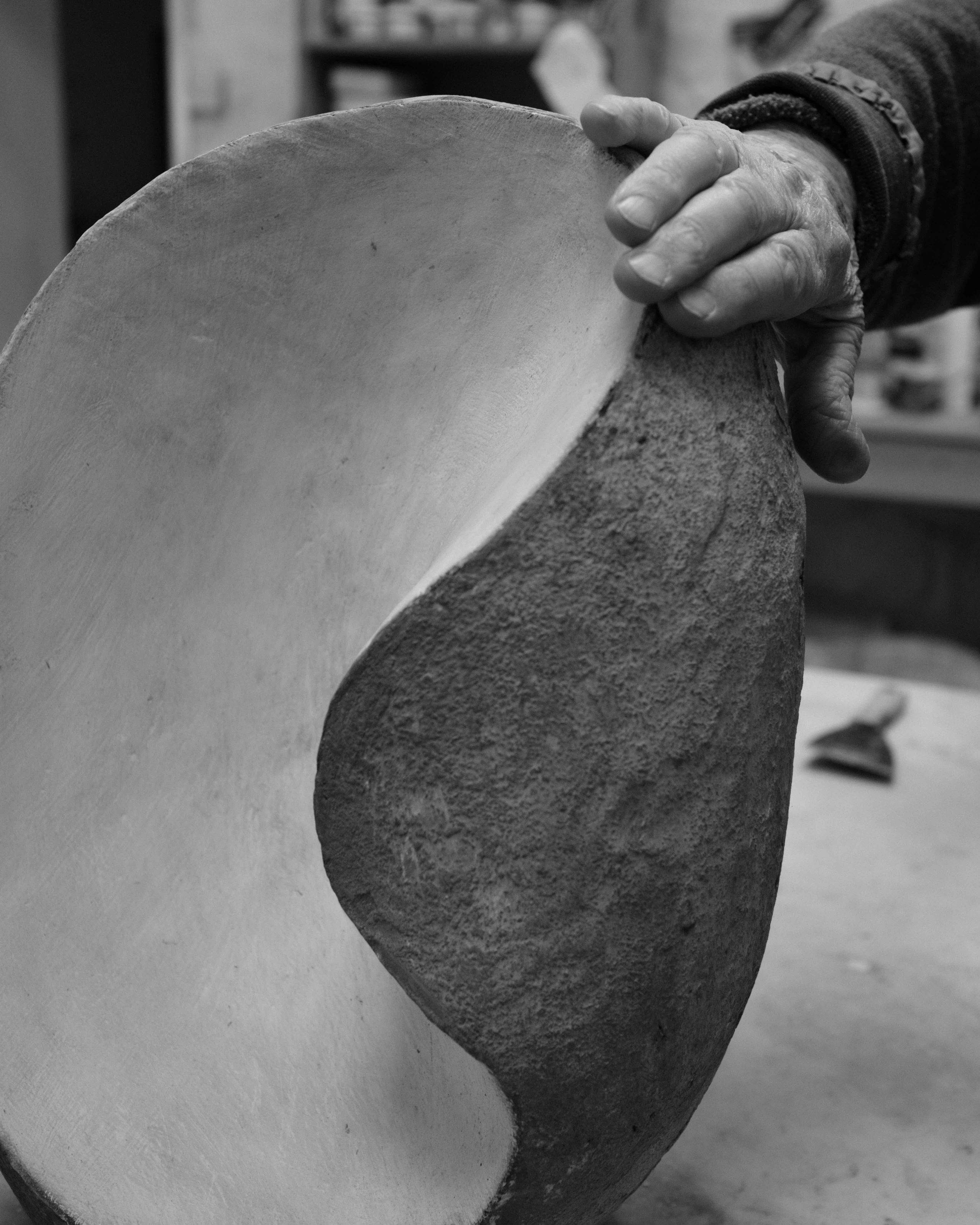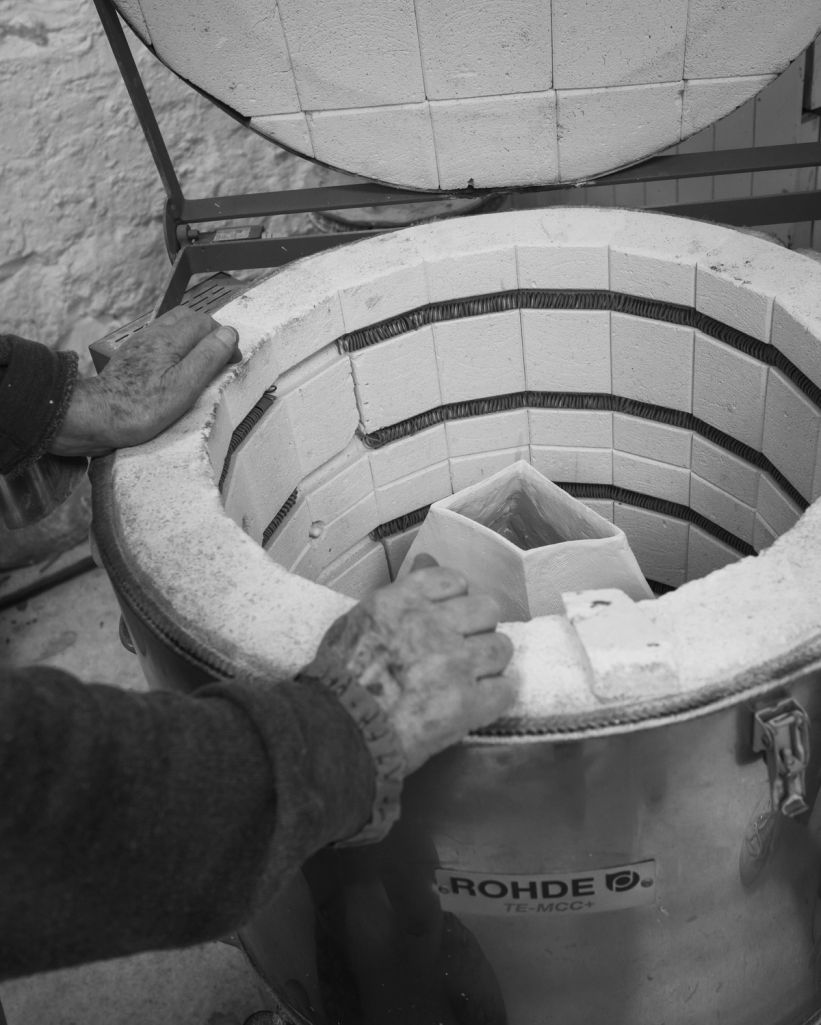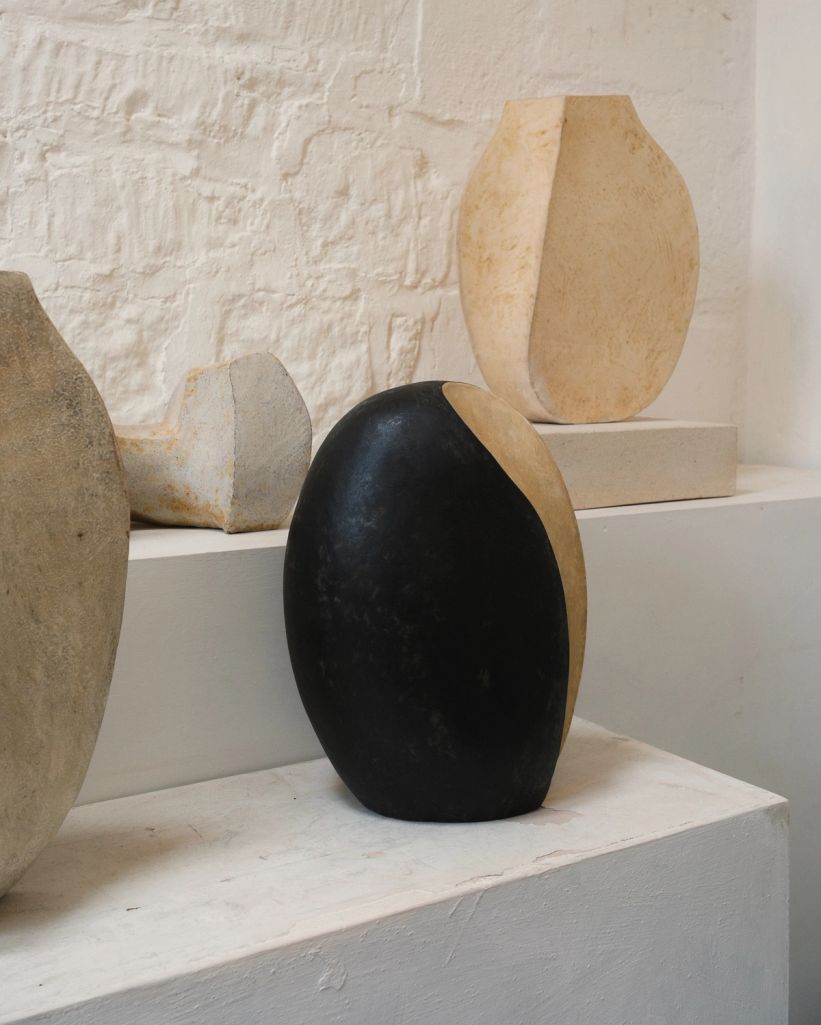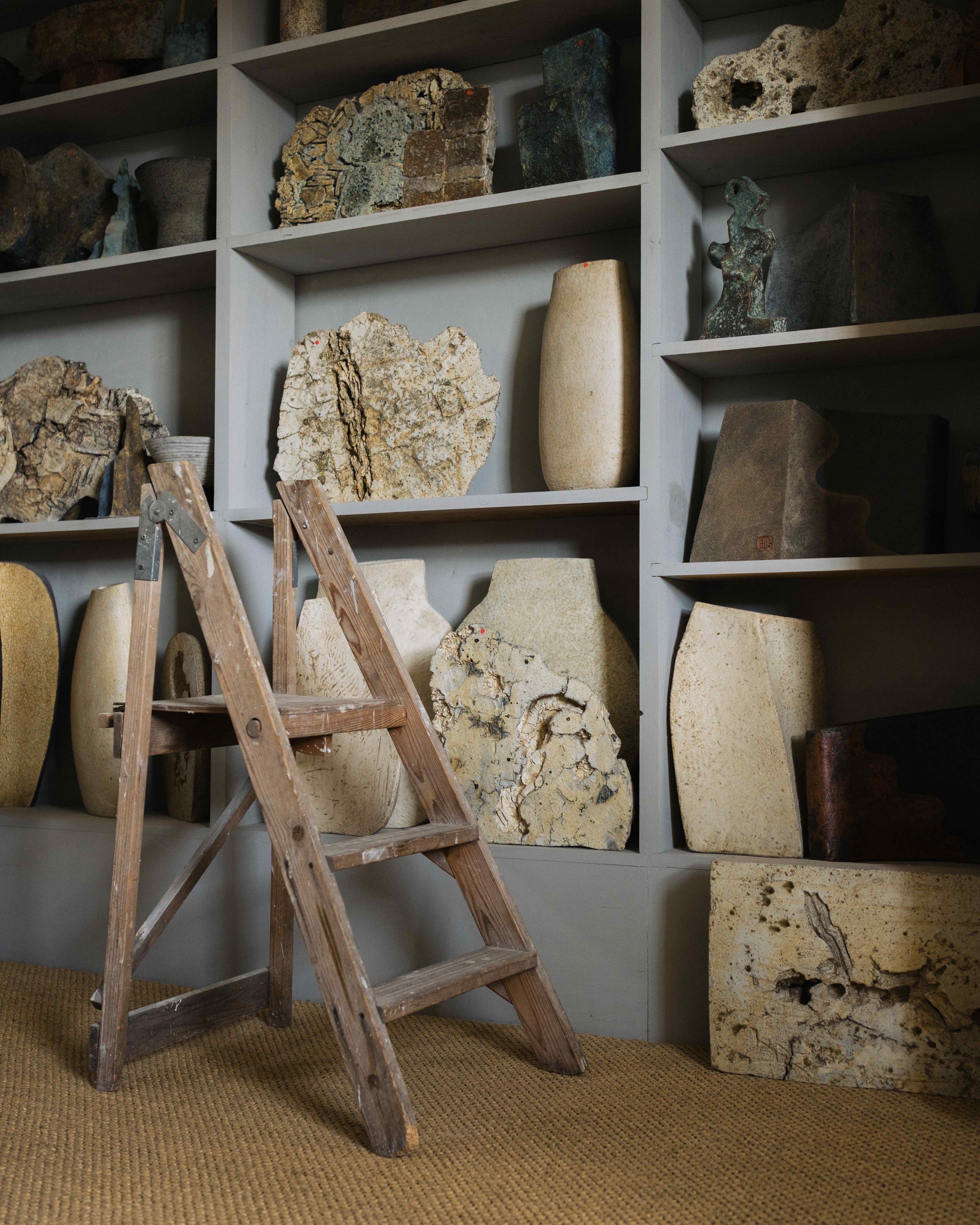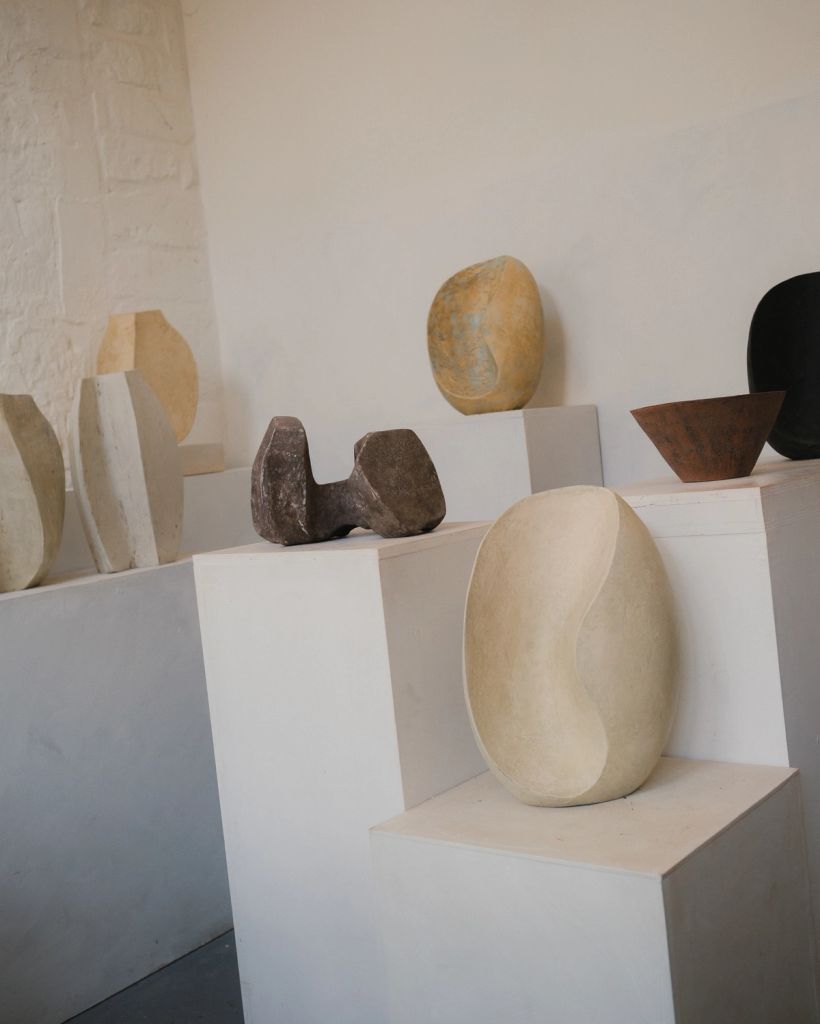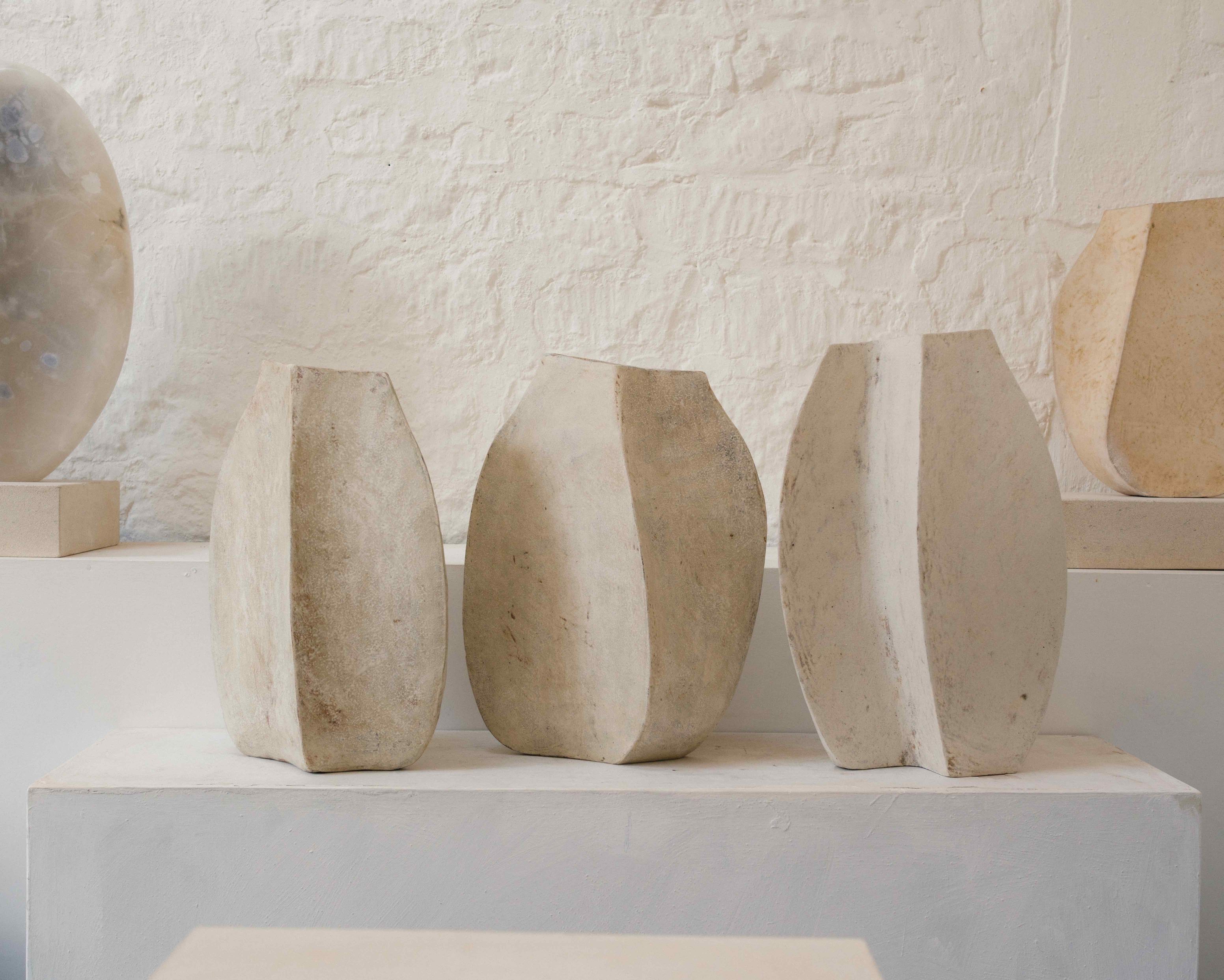New Work by Paul Philp
Paul Philp’s work demonstrates a deep sensitivity to structure. A long experimentation with three-sided and four-sided vessels has resulted in the refinement of a dynamic, shifted shape, where perspectives seem to merge across its gently tilted planes. “Vases have always intrigued me,” Philp says. “I wanted the challenge of somehow making the epitome of a classic shape, but taking it further, beyond the traditional, rounded form.” Having settled on his archetypal four-sided vessel over a decade ago, Philp continues to gain a nuanced understanding of its form through repetition, making only the slightest adjustments to each piece.
Philp’s work is the product of a methodical, disciplined process: each piece might involve four or five high-temperature firings, whereby thin layers of black clay and iron oxide, liquid white China clay, wood ash, or other glazes are applied in stages to the surface of the ceramic, creating a uniquely rich, textural patina, as if the piece has eroded organically over time. By using a mixture of clays with different shrinkage rates to build each pot, Philp encourages subtle craters and imperfections to arise during the firing, recalling the natural weathering of stone.
The unpredictable nature of the kiln provides a constant tension in Philp’s practice. His epitomic vessel form arose from attempting to solve a problem with an exaggerated shallow vessel with a wide plane, which persisted to crack across the shoulders when fired. The perspective-shifting, four-sided shape evolved to overcome this fault. “Although I have since discovered how to fire those narrow, two-sided vessels successfully, the stresses and challenges of the kiln at the time led to its own artistic development,” Philp says. “I am just fascinated by the challenge of pottery – the balance of chance, learning, and careful, methodical thought. It is what motivates me to keep working.”
Photos
- Holly Fielder
- Elliott Cole
